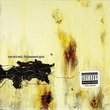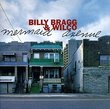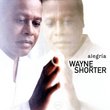| All Artists: Maurice Bevan, Pedro Liendo, Josep Cabre, Marcel Peres, Michael George, Philippe Balloy, Gregorian Chant, Pierre De Breville, Bernart de Ventadorn, Folquet de Marseille, Alfonso X (el Sabio), Neidhart von Reuental, Tannhauser, Oswald von Wolkenstein, Aquitanian Repertory Anonymous, Montpellier MS Anonymous, Adam de la Halle, English Anonymous Title: Les tres riches heures du Moyen Age: A Medieval Journey [Box Set] Members Wishing: 0 Total Copies: 0 Label: Harmonia Mundi Fr. Release Date: 11/21/1995 Album Type: Box set, Import Genres: Dance & Electronic, Special Interest, Classical Styles: Holiday & Wedding, Opera & Classical Vocal, Forms & Genres, Ballads, Historical Periods, Baroque (c.1600-1750), Early Music, Renaissance (c.1450-1600) Number of Discs: 6 SwapaCD Credits: 6 UPC: 794881336227 |
Search - Maurice Bevan, Pedro Liendo, Josep Cabre :: Les tres riches heures du Moyen Age: A Medieval Journey [Box Set]
![Les tres riches heures du Moyen Age: A Medieval Journey [Box Set]](https://nationalbookswap.com/cd//l/82/2582/6012582.jpg) | Maurice Bevan, Pedro Liendo, Josep Cabre Les tres riches heures du Moyen Age: A Medieval Journey [Box Set] Genres: Dance & Electronic, Special Interest, Classical
|
Larger Image |
CD DetailsSimilarly Requested CDs
|
CD Reviews7.5 hours of superb music at a most reasonable price. 12/23/1999 (5 out of 5 stars) "There isn't a clunker in this set. All the performers are top drawer and the recordings are good. The notes are a little brief and a bit scholarly, but can be ignored easily.You will get an idea of the different kinds of medieval music as well as the top groups and soloists working currently in the field.When I got this set, my mother and I listened to all 7+ hours straight through. We then started buying CDs from the different performers we had to hear more from.At twice the price, this would still be an excellent addition to any classical or medieval music collection, as well as the best introduction to medieval music around." Outstanding collection MG Szigeti | Budapest, Hungary | 09/27/2002 (5 out of 5 stars) "I have quite a number of CDs with Medieval Age polyphony, byzantine chant and renaissance music, but this collection goes beyond what could usually be expected from such boxsets. I'd highly recommend it to all." A great anthology but short on explanations Jacques COULARDEAU | OLLIERGUES France | 03/30/2008 (4 out of 5 stars) "This set of six CDs is supposed to take us through the music of the Middle Ages from before Gregorian Chant to the Renaissance, but also from Byzantium to England, from the Mozarabic and Christian Iberian Peninsula to Germany. Note the Slavonic, Scandinavian and Irish traditions are missing. In fact the orthodox tradition is practically absent. These CDs insist on the fact that Gregorian music is derived or invented from traditions coming from the Middle East, what has become in the 7th and subsequent centuries Islam, or part of Islam, via Byzantium and Mozarabic Spain. But that is not enough again. The Hebraic tradition is strangely absent and with it the connection to Sumerian and old Indo-Iranian traditions that are totally absent. It also neglects the fact that the Gregorian tones are obtained from the Greek reduced scale doubled from five degrees to ten. In fact it provides us with a lot of examples of music from these centuries but does not enter details, among other things that singing was a practice that was common in monasteries and convents, but without mixing sexes. High tones had to be sung by children or young teenagers on the male side. Low tones could plainly not be sung on the female side. We will of course regret here the total absence of women in these CDs, I mean women of the Middle Ages of course, particularly Hildegarde von Bingen. These CDs though show very well the apparition of Gregorian monophony from the prosody and psalmody of before, though they do not identify the two styles yet very clearly differentiated at the time. On one side antiphons and responses, on the other side the chorals that are always built on a single harmonic line. Different tones, when they sing together, sing parallel lines or they sing one after the other, alternating their singing. Polyphony appears from there and will develop along different models from one geographical zone to another. The Romanesque tradition is that of a horizontal peregrination to the light of God in the Eastern Choir of the church and the rising sun, a peregrination of a whole congregation that collectively sings in unison. Romanesque Brittany will develop a polyphony that will be introspective and leads to meeting God in one's divine soul, even if that sounds Gnostic and it might very well be. The Gothic tradition is that of a vertical elevation to heaven, an elevation which is an individual experience conveyed by the architecture and a polyphony that makes everyone find their, his or her, own voice, tone, melody up to the sky and God's light there. The English tradition known as Norman or Tudor gothic is that of chorus singing, the different voices building a complex musical architecture with the different melodic lines of the different voices. The CDs provide the musical pieces showing that but not the details and the Slavonic tradition is totally absent. Then these shortcomings explain the rather artificial shift to the Renaissance. It Is not clearly said that any innovation is both a continuation and a "revolution" though the Ars Nova school should have led to this simple idea. This means an evolution is the result of many contextual elements but there never is anything like a brutal break or change. It is always an innovation that springs up from a tradition it does not reject completely. The Renaissance is thus the result of the Middle Ages. But that has a retrospective consequence on the Middle Ages themselves. If they could produce the Renaissance they must have been less dark than many people still pretend. And here these CDs do not integrate Umberto Eco's vision of beauty. As long as beauty was understood as divine, the music could only reflect it and the basic element was that good and evil were integrated in the creation, equally but also in a certain way homogeneously: the creation was one and contained both good and evil. This explains the long tradition, and even the Cistercian reactionary conservatism, of the unison as the target of all compositions. When differences started being seen as contrastive and having to be used in order to build a contrastive architecture, beauty no longer was in the homogenized unison, no longer was divine but purely musical. Then instrumental music became possible, chorus singing became possible, the Renaissance became possible. Beauty was no longer divine but aesthetic. These CDs provide the music that shows this reality but not the explanations. We are kind of alone in front of this music.
Dr Jacques COULARDEAU, University Paris Dauphine, University Paris 1 Pantheon Sorbonne & University Versailles Saint Quentin en Yvelines " |

 Track Listings (12) - Disc #1
Track Listings (12) - Disc #1








